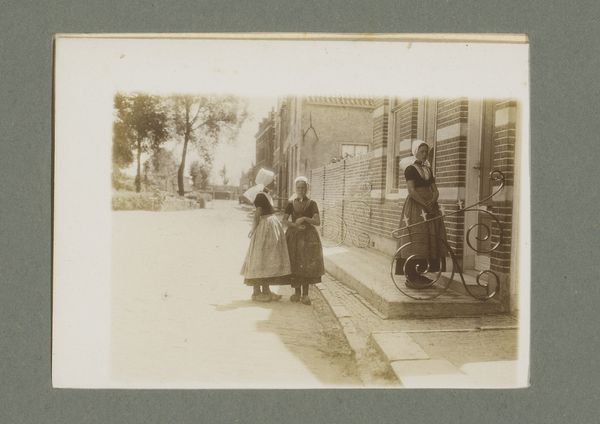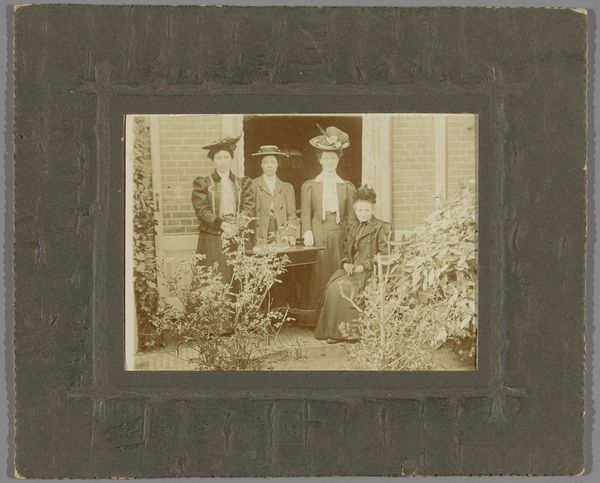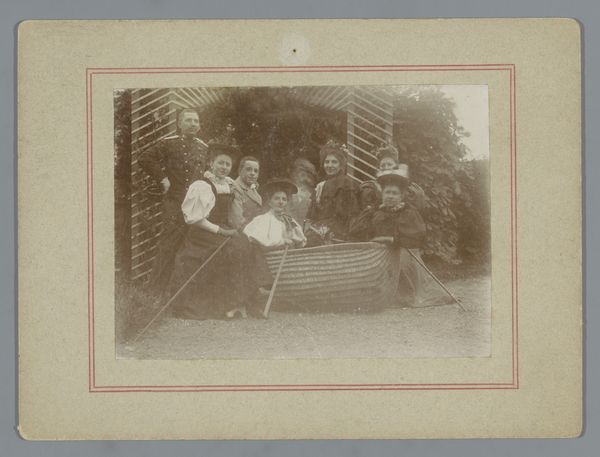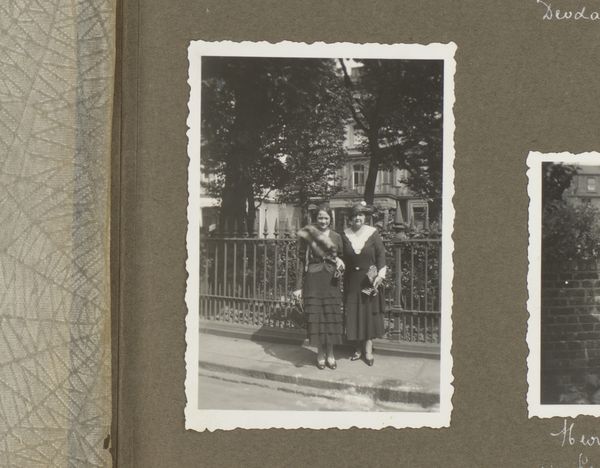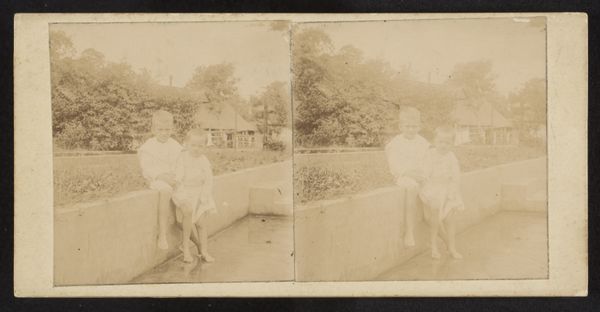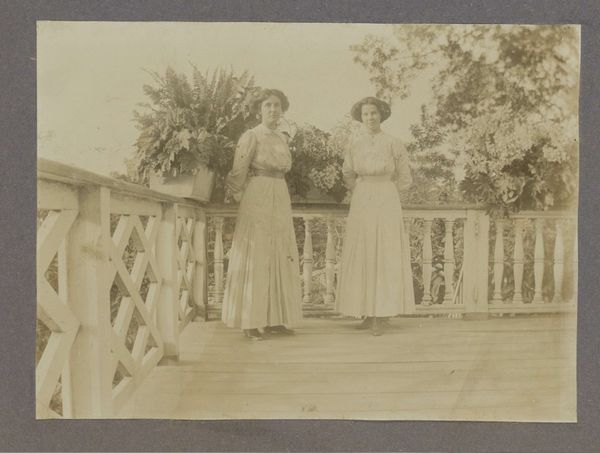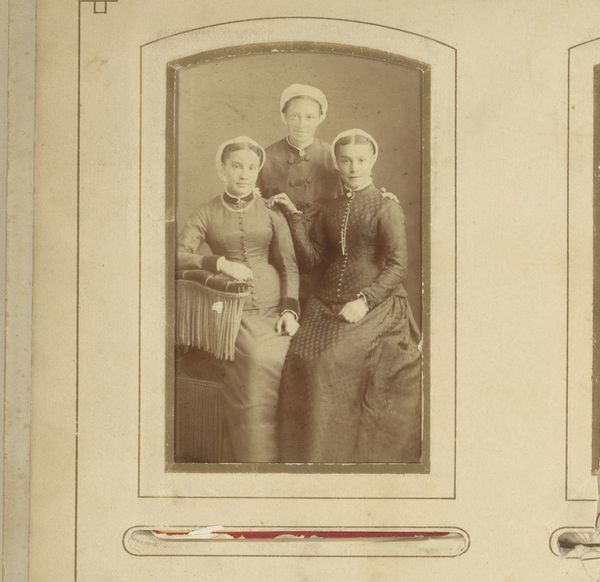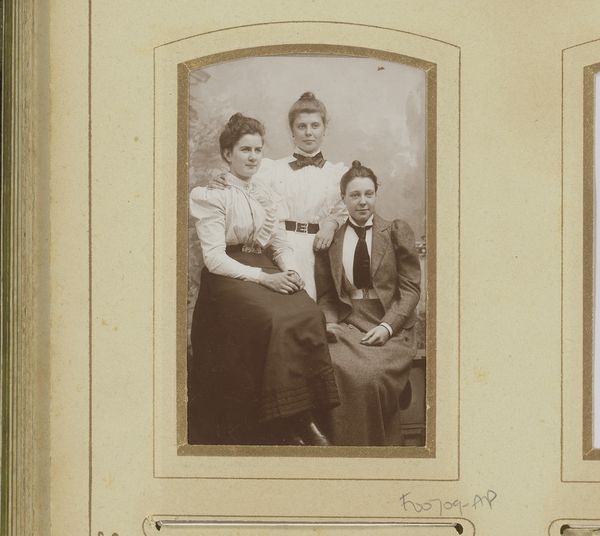
photography
#
portrait
#
aged paper
#
light pencil work
#
homemade paper
#
reduced colour palette
#
light coloured
#
sketch book
#
photography
#
personal sketchbook
#
sketchbook drawing
#
genre-painting
#
paper medium
#
sketchbook art
#
realism
Dimensions: height 73 mm, width 99 mm
Copyright: Rijks Museum: Open Domain
Curator: This is an interesting find; this photograph is called “Three Men in Traditional Costume Standing Before a Fence.” It’s attributed to G. Hidderley, dating somewhere between 1920 and 1940. Editor: There's a definite stillness to it. Something about the sepia tones and slightly blurred figures gives the sense of a captured memory. It feels posed, but not staged, almost as if the subjects agreed to participate rather reluctantly. Curator: I think your reading hits on something important, that interplay between staged performance and reality. The work reminds me how visual records can freeze cultural identities in time, but also risks flattening the lived experiences of these men into simple costumery. Who were they beyond the clothing and context of the photograph? What was their relationship to tradition, and to the rapidly changing world around them? Editor: Absolutely, and if we focus on the image’s materiality, on the level of production: the paper and photographic chemicals were produced through complex international systems, which touches on access, labor, trade routes, class. The clothes are homespun perhaps, or made by local labor, while the photo represents their distribution in a capitalist enterprise. I'd even guess the paper might be homemade based on its texture. It certainly has an aged quality. Curator: Yes, this gets into that dynamic relationship between representation and lived reality, as photography has transformed notions of authenticity and visibility. It’s important for us to be wary about passively viewing these historical photos, instead we can see these figures as resisting static definitions. And for me, this picture asks us to consider our own role in looking, in interpreting, and perhaps even in perpetuating certain cultural myths. Editor: So, while seemingly simple, a photograph like this allows us a fascinating glimpse into intersecting layers of identity and history—cultural performances and their relation to material production, local artistry and industrial dissemination. Curator: Precisely. There's something quietly powerful about seeing them like this. Editor: I agree. This photograph contains so much, doesn't it?
Comments
No comments
Be the first to comment and join the conversation on the ultimate creative platform.
